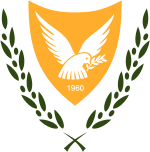DCA Cyprus
Association information
Air Traffic Services (ATS)
In accordance to ICAO ANNEX 11 the objectives of the air traffic services shall be to:
1. Prevent collisions between aircraft
2. Prevent collisions between aircraft on the manoeuvring area and obstructions
3. Expedite and maintain an orderly flow of air traffic
4. Provide advice and information useful for the safe and efficient conduct of flight
5. Notify appropriate organizations regarding aircraft in need of search and rescue aid and assist such organizations as required
The objectives are achieved through the provision of Air Traffic Control, Flight Information and Alerting services by dedicated Air Traffic Control Units.
The Nicosia Area Control Centre (ACC)
This unit is responsible for the provision of air traffic control within the limits of the Nicosia Flight Information Region (FIR) as defined in the diagram below. It provides air traffic control to all controlled flights (flights that are in contact with the air traffic controllers) within a controlled area (airways) that lie under its jurisdiction as to fulfil the objectives 1and 3 mentioned above.
The Air Traffic Control Units provides advice and information for the safe and efficient conduct of flight (objective 4) including light or training aircraft operating in the designated training areas, routes and agreed heights within the limits of each unit in the Cypriot airspace. They are also responsible for notifying appropriate organizations regarding aircraft in need of search and rescue aid, and assists such organizations as required (objective 5).
Nicosia Flight Information Region
Larnaka and Pafos airports Aerodrome and Approach Control Units
Air traffic control service for aerodrome traffic at Larnaka and Pafos airports is provided from the Air Traffic Control towers to fulfil the objectives 1, 2 and 3 mentioned above. All traffic on the manoeuvring area of an aerodrome and all aircraft flying in the vicinity of an aerodrome is under their responsibility. They are also responsible for the provision of air traffic service to the aircraft in the control zone (an area in the near vicinity of the airport where departures and the final approach for the landing aircraft takes place).
Larnaka and Pafos Control towers work in close coordination with the Nicosia ACC.
In 2002 and 2003, new air traffic control towers were erected in Larnaca and Pafos respectively.
New Larnaka Control Tower (photo by E. Kefalas)
Aeronautical Information Services (AIS)
The objective of the Aeronautical Information Services, in accordance with ICAO annex 15, is to ensure the flow of information necessary for the safety, regularity and efficiency of international air navigation. The goal is to satisfy the need for uniformity and consistency in the provision of aeronautical information/data that is required for operational use by international civil aviation.
This service is provided by the following units:
Central Office of Aeronautical Information Services
This office is stationed in the headquarters of the Civil Aviation Department and is in constant cooperation and coordination with the Air Traffic Control Reporting Offices (ARO) of Larnaca and Pafos airports. ICAO Annex 15 specifies that aeronautical information should be published as an integrated aeronautical information package (IAIP), composed of the following elements:
NOTAM - Notices to Airmen
AIP- Aeronautical Information Publication AIC – Aeronautical Information Circulars
The Central office of Aeronautical information is responsible for the publication, revision and distribution of the IAIP.
Air Traffic Control Reporting Offices for Larnaca and Pafos airports
The ARO Larnaca and Pafos airports are responsible for providing the aircraft crew with updated information necessary for the conduct of flight. The Pre-Flight Information Bulletin (PIB) (before flight info) is readily available and informs all concerned crews and their companies for all en route restrictions, diversions and anything that might affect any flight from the departure to the destination aerodrome.
The ARO are also responsible for providing the crew with post-flight information based on pilot reports and other, for anything that might affect any subsequent flights in terms of the condition, serviceability or un-serviceability of any air navigational aids.
Communication, Navigation and Surveillance services (CNS)
The Cyprus CNS provider is responsible to install, maintain and operate radio aids, aeronautical and telecommunication aids and radar equipment necessary for the international Aeronautical Telecommunication services and to provide technical support to the ATS and Meteorology providers. The above responsibility rests with CYTA, the Cyprus Telecoms Authority.
According to ICAO ANNEX 10 - Aeronautical Telecommunications, the object of the international aeronautical telecommunication service is to ensure the telecommunications and radio aids to air navigation necessary for the safety, regularity and efficiency of international air navigation. These are achieved through the provision of:
Aeronautical telecommunication service. A telecommunication service provided for any aeronautical purpose.
Radio navigation service. A service providing guidance information or position data for the efficient and safe operation of aircraft supported by one or more radio navigation aids.
Surveillance radar. Radar equipment used to determine the position of an aircraft in range and azimuth; and Airborne collision avoidance system (ACAS). An aircraft system based on secondary surveillance radar (SSR) transponder signals which operates independently of ground-based equipment to provide advice to the pilot on potential conflicting aircraft that are equipped with SSR transponders.






.png)

.jpg)
